Enterprise Architecture
The Power of Enterprise Architecture in Boosting IT Management Efficiency
Introduction: Understanding the significance of enterprise architecture in the realm of IT management is crucial for businesses seeking to thrive in today's digital landscape. With the right approach, enterprise architecture can measurably enhance IT management efficiency, align strategies, and drive impactful outcomes. In this article, we explore the various ways in which enterprise architecture impacts IT management and how organizations can leverage its potential to optimize their IT infrastructure.
Measuring Efficiency through Enterprise Architecture
Efficiency is the cornerstone of effective IT management, and measuring its impact is essential for continual improvement. By employing enterprise architecture practices, businesses can gain a comprehensive understanding of their IT landscape, enabling them to identify inefficiencies, bottlenecks, and areas for improvement. Through robust measurement frameworks, such as performance indicators and key performance indicators (KPIs), organizations can track the direct influence of enterprise architecture on IT management efficiency. These metrics provide valuable insights into resource utilization, process optimization, and cost reduction, helping organizations achieve their strategic objectives.
Aligning Strategies for Seamless Operations
The integration of enterprise architecture with IT management strategies acts as a guiding force, ensuring that technology initiatives align with broader organizational goals. By aligning enterprise architecture with IT management strategies, businesses can achieve a seamless fusion of technology, processes, and people. This alignment enhances operational efficiency, promotes collaboration, and fosters innovation within the IT ecosystem. Through a clear understanding of the interdependencies between enterprise architecture and IT management, organizations can maximize the potential of their technology investments and drive positive outcomes.
Implementing Frameworks for Effective Management
Implementing enterprise architecture frameworks within IT management establishes a structured approach to system design, development, and maintenance. Frameworks like TOGAF (The Open Group Architecture Framework) provide a comprehensive blueprint for organizations, facilitating the integration of technology components and defining clear guidelines for their management. By adopting established frameworks, organizations can standardize their IT processes, ensure consistency, and streamline decision-making. This systematic approach helps reduce complexity, mitigate risks, and enhance overall IT management efficiency.
Leveraging Architecture for Optimal Infrastructure Management
Enterprise architecture plays a pivotal role in optimizing IT infrastructure management. By leveraging architecture principles and practices, businesses can gain deep insights into their technology assets, dependencies, and capabilities. This knowledge enables organizations to make informed decisions about infrastructure investments, resource allocation, and system integration. Moreover, enterprise architecture facilitates the identification of opportunities for consolidation, rationalization, and modernization of the IT landscape, resulting in enhanced agility, scalability, and cost-effectiveness.
Strategic Planning for IT Management Excellence
Strategic enterprise architecture planning serves as a compass for effective IT management. It involves defining a clear vision, setting goals, and formulating a roadmap for aligning technology initiatives with business objectives. Through strategic planning, organizations can identify the critical areas where enterprise architecture can have the most significant impact on IT management efficiency. This proactive approach enables businesses to stay ahead of technology trends, adapt to changing market dynamics, and drive innovation. By incorporating enterprise architecture into strategic planning, organizations can unleash the full potential of their IT management capabilities.
Conclusion: In the ever-evolving landscape of IT management, enterprise architecture emerges as a vital catalyst for efficiency, alignment, and optimization. By measuring the impact of enterprise architecture, aligning it with management strategies, implementing frameworks, leveraging its potential for infrastructure management, and adopting strategic planning, organizations can unlock the power of enterprise architecture and drive their IT management to new heights of excellence.


2 Review
ASSIST is a software platform for business architecture that enables an agile approach to improving and transforming your business.


1 Review
BiZZdesign Enterprise Studio is the collaborative business design platform that offers powerful, integrated modeling across multiple disciplines. It provides all the capabilities needed to seamlessly plan, track and execute change in a single software platform.
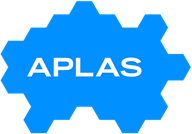

1 Review
Aplas is an atlas for application architecture - allowing anyone to understand complex systems of software. Software mapping is a powerful new capability that allows anyone to understand software at scale. Automatically index your software from a range of sources, auto-generate a map, then design styles to tell specific stories to your stakeholders…
Read more about this company

1 Review
ARCHIREPO is a suitable management tool for creating and sharing knowledge about the system of managing an organization and its key assets (so called governance system or management framework). It includes administration of business and Information Technology architecture of an institution or enterprise.


1 Review
EAComposer is a SaaS enterprise architecture tool with a built-in visual modeler and a secure database for storing work, reports, and analyses.
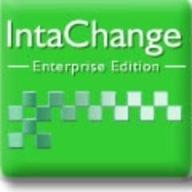

1 Review


1 Review
If you are looking for a source of truth in your organization then project management is the answer. Always know who is working on what in your organization, KreativBricks makes it is to: Create and assign milestones, tasks Set due dates, priority Gantt Charts to see real time progress Increased productivity with Kanban Remember your priority with…
Read more about this company
1 Review


1 Review
Castera is a business architecture and capability mapping software that is easy to use, cloud-based and inexpensive tool enables companies to model capabilities, draft value streams and process, draft business motivation and strategy, and capture a veritable treasure of enterprise information to associate with other entities.


1 Review
New standards for business continuity and organizational resilience are continuously emerging. You need a business continuity management program that is objective, consistent, and sustainable. Virtual Corporation’s Business Continuity Maturity Model (BCMM®) provides you with the steps to take on the path toward resilience and compliance with standards…
Read more about this company

1 Review
The LeanIX Enterprise Architecture Suite (EAS) is a Software-as-a-Service solution that enables Enterprise Architects to establish and sustain a transparent as-is IT landscape, plan roadmaps in the context of the business objectives, and execute transformation programs. Enterprise Architecture teams using LeanIX EAS have the power to strategically…
Read more about this company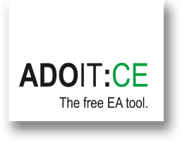

1 Review
ADOIT is a fully web-based enterprise architecture suite with powerful time-related business analysis views on your repository. ADOIT is a TOGAF-certified EA suite and allows for role-based access to architecture information.




1 Review
UNICOM System Architect is a market-leading enterprise architecture tool that enables to build and automatically generate data-driven views of organization's enterprise architecture -- its strategy, business architecture, operational architecture, data, application landscape, supporting systems, technologies, and infrastructure.


1 Review
QualiWare enables positive change by providing tools, methods and services that ensure coherency, consensus and consistency, and support the agile and innovative company in handling complex knowledge, maintained by multiple persons with different backgrounds, in a continuous process.


1 Review
SAMU can exchange data with all of them continuously in order to provide the most up-to-date architecture landscape for everyone. Information in SAMU is diverse: from business architecture components to applications, information entities, organization and technology and their dependencies.


1 Review
UPM·X is the EA solution on ServiceNow unifying the planning and operational levels on a single platform without integrations. That enables you to create a digital twin of your enterprise and drive transformational change based on high-quality live information. Enterprise Architecture Management (EAM) is key in overseeing your transformation activities…
Read more about this company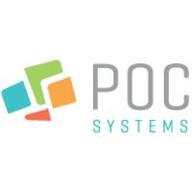

1 Review
POC’s booking solution aims to assist businesses in optimizing their office space and adapt to a more flexible way of working, by allowing employees to book their seats on a use per need basis, anytime and anywhere all on one mobile application. the app combines with graphical seating allocation platform, that provides a real time view of the workspace…
Read more about this company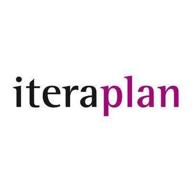

1 Review
iteraplan is a tool to manage Enterprise architecture with focus on the IT landscape.
- Enterprise architecture software refers to a specialized tool or platform designed to assist organizations in creating, documenting, analyzing, and managing their enterprise architecture. It provides a comprehensive framework for visualizing and mapping the relationships between an organization's business processes, information systems, technology infrastructure, and strategic goals.
- Using enterprise architecture software offers several benefits. It helps organizations gain a holistic view of their IT landscape, enabling better decision-making, improved communication, and enhanced collaboration among stakeholders. It also allows businesses to identify inefficiencies, optimize processes, and align technology initiatives with strategic objectives. Additionally, enterprise architecture software supports risk management, compliance, and the ability to adapt to changing business needs and technological advancements.
- Enterprise architecture software plays a crucial role in IT management by providing a structured approach to planning, designing, and managing IT systems. It helps IT managers understand the relationships and dependencies between different technology components, assess the impact of changes, and make informed decisions regarding technology investments and resource allocation. Furthermore, enterprise architecture software assists in identifying areas for consolidation, standardization, and optimization, leading to improved efficiency and cost savings.
- When selecting enterprise architecture software, it's essential to consider features such as visual modeling capabilities, support for industry-standard frameworks like TOGAF or ArchiMate, integration with other IT management tools, collaboration and documentation features, the ability to generate reports and analytics, and scalability to accommodate the organization's size and complexity. The software should also provide customization options, data security measures, and user-friendly interfaces for ease of use.

